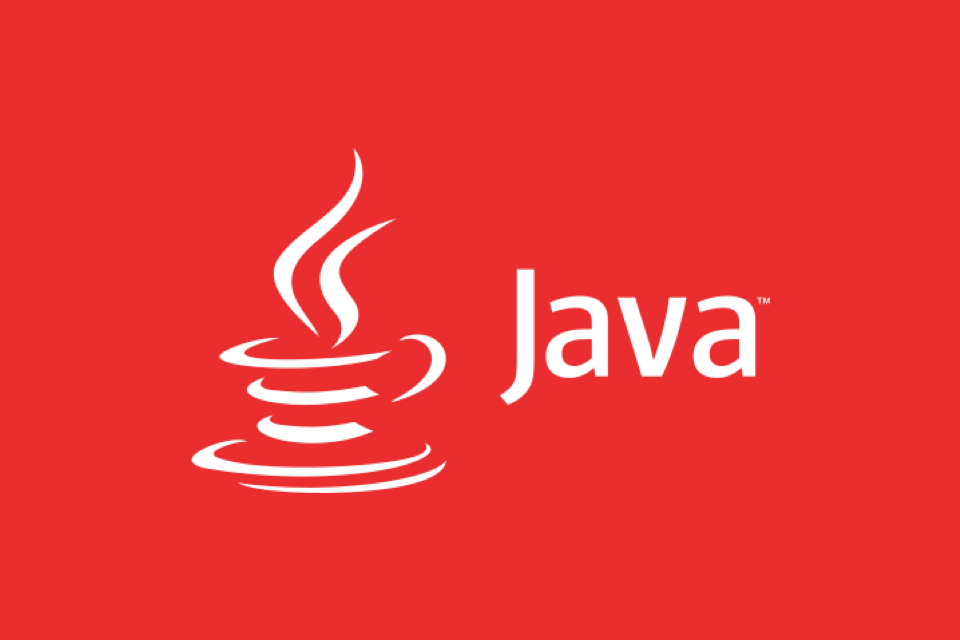Using the new Java Date and Time API (java.time).
Jul 06, 2025 am 02:55 AMThe java.time package of Java 8 provides thread-safe and clear design date and time processing methods. Get the current date and time to use LocalDateTime.now() or ZonedDateTime.now(ZoneId.of("Asia/Shanghai")); 1. Use DateTimeFormatter for formatting, such as ISO_DATE or custom format; 2. The parsing needs to ensure that the string matches the format strictly; 3. Addition and subtraction operations are implemented through plusXxx()/minusXxx(); 4. Use isBefore()/isAfter() for comparison; 5. Use withZoneSameInstant for time zone conversion and support listing of all time zones ZoneId.getAvailableZoneIds().

Java 8 introduces a brand new date and time API ( java.time package), which solves the problems of thread insecure and design chaos in the old version of Date and Calendar classes. This new API is more intuitive, easy to use, and more in line with modern development needs. If you are using Java 8 or later, it is recommended to use classes in java.time to handle dates and times first.

How to get the current date and time?
The most commonly used method is to use LocalDateTime.now() to obtain the time of the current system. It contains information about year, month, day, hour, minute, and seconds, but does not have a time zone.

LocalDateTime now = LocalDateTime.now(); System.out.println(now); // The output is similar to 2025-04-05T14:30:45.123
If you need to include time zone information, you can use ZonedDateTime.now() :
ZonedDateTime nowWithZone = ZonedDateTime.now(ZoneId.of("Asia/Shanghai"));Tips: In distributed or internationalized scenarios, it is recommended to always bring time zone information to avoid data deviation due to the server's local time zone settings.
How to format and parse dates?
Use DateTimeFormatter to facilitate formatting of output dates, or parse strings into date objects.
For example, format LocalDate as yyyy-MM-dd :
LocalDate date = LocalDate.now();
String formatted = date.format(DateTimeFormatter.ISO_DATE);
// Or custom format DateTimeFormatter customFormatter = DateTimeFormatter.ofPattern("yyyy/MM/dd");
String custom = date.format(customFormatter); // The output is similar to 2025/04/05Conversely, if you want to parse from a string to a date:
String input = "2025-04-05"; LocalDate parsed = LocalDate.parse(input, DateTimeFormatter.ISO_DATE);
Note: The format template must strictly match the input string, otherwise an exception will be thrown. For example, if
"2025/04/05"is parsed withISO_DATE, it will fail.
How to add, subtract and compare dates?
Classes such as LocalDate , LocalDateTime , etc. all provide plusXxx() and minusXxx() methods for addition and subtraction operations.
For example, add three days to the current date:
LocalDate today = LocalDate.now(); LocalDate threeDaysLater = today.plusDays(3);
You can also add hours, minutes, months, etc.:
-
plusHours(1) -
plusMonths(2) -
minusWeeks(1)
The date comparison is also very simple, you can use isBefore() and isAfter() directly:
LocalDate d1 = LocalDate.of(2025, 4, 5); LocalDate d2 = LocalDate.of(2025, 4, 6); boolean isBefore = d1.isBefore(d2); // true
What to do if you encounter a time zone?
When dealing with time conversion across time zones, you can use ZonedDateTime and ZoneId .
For example, converting Beijing time to New York time:
ZonedDateTime beijingTime = ZonedDateTime.now(ZoneId.of("Asia/Shanghai"));
ZonedDateTime newYorkTime = beijingTime.withZoneSameInstant(ZoneId.of("America/New_York"));This method will automatically consider factors such as daylight saving time, which is more reliable than manually calculating the offset.
If you want to list all available time zone names, you can do this:
Set<String> zones = ZoneId.getAvailableZoneIds(); // Get all supported time zone names
Basically these common operations. Mastering these points should be enough for processing time in daily development. Although you may be a little uncomfortable at the beginning, after using it a few times, you will find that the design of java.time is really clear and reasonable.
The above is the detailed content of Using the new Java Date and Time API (java.time).. For more information, please follow other related articles on the PHP Chinese website!

Hot AI Tools

Undress AI Tool
Undress images for free

Undresser.AI Undress
AI-powered app for creating realistic nude photos

AI Clothes Remover
Online AI tool for removing clothes from photos.

Clothoff.io
AI clothes remover

Video Face Swap
Swap faces in any video effortlessly with our completely free AI face swap tool!

Hot Article

Hot Tools

Notepad++7.3.1
Easy-to-use and free code editor

SublimeText3 Chinese version
Chinese version, very easy to use

Zend Studio 13.0.1
Powerful PHP integrated development environment

Dreamweaver CS6
Visual web development tools

SublimeText3 Mac version
God-level code editing software (SublimeText3)
 VSCode settings.json location
Aug 01, 2025 am 06:12 AM
VSCode settings.json location
Aug 01, 2025 am 06:12 AM
The settings.json file is located in the user-level or workspace-level path and is used to customize VSCode settings. 1. User-level path: Windows is C:\Users\\AppData\Roaming\Code\User\settings.json, macOS is /Users//Library/ApplicationSupport/Code/User/settings.json, Linux is /home//.config/Code/User/settings.json; 2. Workspace-level path: .vscode/settings in the project root directory
 How to handle transactions in Java with JDBC?
Aug 02, 2025 pm 12:29 PM
How to handle transactions in Java with JDBC?
Aug 02, 2025 pm 12:29 PM
To correctly handle JDBC transactions, you must first turn off the automatic commit mode, then perform multiple operations, and finally commit or rollback according to the results; 1. Call conn.setAutoCommit(false) to start the transaction; 2. Execute multiple SQL operations, such as INSERT and UPDATE; 3. Call conn.commit() if all operations are successful, and call conn.rollback() if an exception occurs to ensure data consistency; at the same time, try-with-resources should be used to manage resources, properly handle exceptions and close connections to avoid connection leakage; in addition, it is recommended to use connection pools and set save points to achieve partial rollback, and keep transactions as short as possible to improve performance.
 Mastering Dependency Injection in Java with Spring and Guice
Aug 01, 2025 am 05:53 AM
Mastering Dependency Injection in Java with Spring and Guice
Aug 01, 2025 am 05:53 AM
DependencyInjection(DI)isadesignpatternwhereobjectsreceivedependenciesexternally,promotingloosecouplingandeasiertestingthroughconstructor,setter,orfieldinjection.2.SpringFrameworkusesannotationslike@Component,@Service,and@AutowiredwithJava-basedconfi
 python itertools combinations example
Jul 31, 2025 am 09:53 AM
python itertools combinations example
Jul 31, 2025 am 09:53 AM
itertools.combinations is used to generate all non-repetitive combinations (order irrelevant) that selects a specified number of elements from the iterable object. Its usage includes: 1. Select 2 element combinations from the list, such as ('A','B'), ('A','C'), etc., to avoid repeated order; 2. Take 3 character combinations of strings, such as "abc" and "abd", which are suitable for subsequence generation; 3. Find the combinations where the sum of two numbers is equal to the target value, such as 1 5=6, simplify the double loop logic; the difference between combinations and arrangement lies in whether the order is important, combinations regard AB and BA as the same, while permutations are regarded as different;
 Troubleshooting Common Java `OutOfMemoryError` Scenarios
Jul 31, 2025 am 09:07 AM
Troubleshooting Common Java `OutOfMemoryError` Scenarios
Jul 31, 2025 am 09:07 AM
java.lang.OutOfMemoryError: Javaheapspace indicates insufficient heap memory, and needs to check the processing of large objects, memory leaks and heap settings, and locate and optimize the code through the heap dump analysis tool; 2. Metaspace errors are common in dynamic class generation or hot deployment due to excessive class metadata, and MaxMetaspaceSize should be restricted and class loading should be optimized; 3. Unabletocreatenewnativethread due to exhausting system thread resources, it is necessary to check the number of threads, use thread pools, and adjust the stack size; 4. GCoverheadlimitexceeded means that GC is frequent but has less recycling, and GC logs should be analyzed and optimized.
 python pytest fixture example
Jul 31, 2025 am 09:35 AM
python pytest fixture example
Jul 31, 2025 am 09:35 AM
fixture is a function used to provide preset environment or data for tests. 1. Use the @pytest.fixture decorator to define fixture; 2. Inject fixture in parameter form in the test function; 3. Execute setup before yield, and then teardown; 4. Control scope through scope parameters, such as function, module, etc.; 5. Place the shared fixture in conftest.py to achieve cross-file sharing, thereby improving the maintainability and reusability of tests.
 Understanding the Java Virtual Machine (JVM) Internals
Aug 01, 2025 am 06:31 AM
Understanding the Java Virtual Machine (JVM) Internals
Aug 01, 2025 am 06:31 AM
TheJVMenablesJava’s"writeonce,runanywhere"capabilitybyexecutingbytecodethroughfourmaincomponents:1.TheClassLoaderSubsystemloads,links,andinitializes.classfilesusingbootstrap,extension,andapplicationclassloaders,ensuringsecureandlazyclassloa
 How to work with Calendar in Java?
Aug 02, 2025 am 02:38 AM
How to work with Calendar in Java?
Aug 02, 2025 am 02:38 AM
Use classes in the java.time package to replace the old Date and Calendar classes; 2. Get the current date and time through LocalDate, LocalDateTime and LocalTime; 3. Create a specific date and time using the of() method; 4. Use the plus/minus method to immutably increase and decrease the time; 5. Use ZonedDateTime and ZoneId to process the time zone; 6. Format and parse date strings through DateTimeFormatter; 7. Use Instant to be compatible with the old date types when necessary; date processing in modern Java should give priority to using java.timeAPI, which provides clear, immutable and linear







